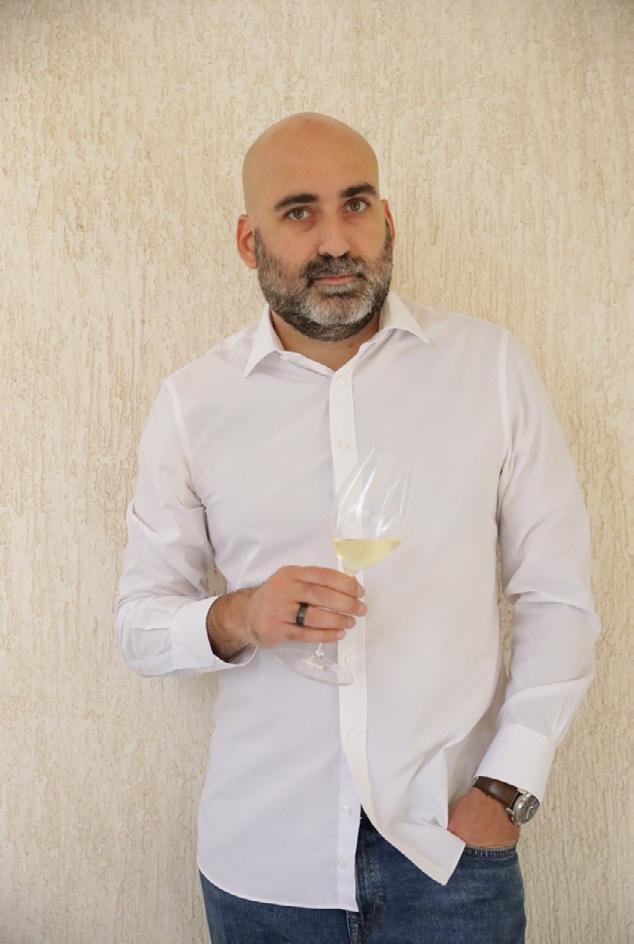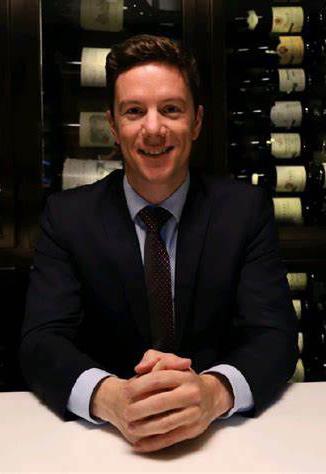
7 minute read
Crafting a profitable wine list
How three leading sommeliers make the most from their wine programme

Top sommeliers don’t curate lists purely out of self-interest. Ultimately their role is to ensure the beverage programme harmoniously blends with the cuisine, appeals to their customers and is a profit center. We asked three notable sommeliers about their strategies when developing wine lists that combine these elements.
Despite his relatively young age, Terry Kandylis has been a prominent figure in the UK sommelier scene for more than a decade. The Evia, Greece, born Kandylis has worked at several notable restaurants including Heston Blumenthal’s The Fat Duck, The Ledbury and as Head Sommelier at 67 Pall Mall, after which he spent time as Group Wine Director for Caprice Holdings vast number of London eateries before return to Noble Rot, a trio of London based ‘shrines to the vin.’ In 2016 Kandylis was awarded the distinction of UK Sommelier of the Year.
Zambia-born Bernard Joseph Lemoyne is the Head Sommelier and General Manager of Ottawabased Atelier, a prestigious restaurant in Canada’s capital city. Lemoyne began his hospitality career in a kitchen while studying criminology at the University of Ottawa. Ten years later he completed his sommelier programme at a local college, before pursuing the Master Sommelier title.
Eleftherios Hanialidis MS has enjoyed a long and prosperous career in the hospitality industry as a Head Sommelier and consultant. He is an ASI Diploma (Gold) recipient and Certified Sommelier through the Court of Master Sommeliers. He was awarded the title of Best Sommelier of Greece in 2020.
The Food and Wine Relationship
A sentiment shared by all three sommeliers is the need of the wine list to align with the cuisine of the restaurant, albeit where Atelier’s Lemoyne journey to crafting a wine list begins in the kitchen, Kandylis says ‘at Noble Rot wine is centre stage.’
Lemoyne says “whether it is here at Atelier or when I am consulting is having a meeting with the chef and kitchen. Ultimately restaurants are chef driven. Your wine list should align with the cuisine first.” Kandylis stresses the importance of a wine list that complements the menu's culinary themes, but selections at Noble Rot aren’t limited to France and England, where Chef Stephen Harris sources most of his ingredients. He explains “we love artisanal producers who farm responsibly and make delicious wines that speak of where they were grown, whether that is the classic French and Italian regions, or up-and-coming terroirs elsewhere in the world. This ethos is reflected in the vignerons we write about in Noble Rot magazine, which is the starting point for all our restaurant wine programmes, although the exact composition of each list will differ slightly from site-to-site.”
Kandylis counters profitability is found in building consumer interest. “At Noble Rot we deliberately work on very tight margins compared to other restaurants and do everything we can make our lists different from elsewhere. This encourages our guests to drink better which, in turn, enhances their experience, creates regular customers, and has enabled us to build a reputation as a wine destination. To do this we buy from a wide network of private collectors and European merchants, in addition to working closely with UK suppliers (including our sister company Keeling & Andrew).”
Kandylis suggests volume-driven ordering and negotiation of volume discounts ‘will reduce wine costs and increase profit margins, but the trade-off is usually a less interesting wine list.”
Classic wine styles and regions are fundamental to our lists. They are usually referred to as ‘classic’ for good reason.
– Terry Kandylis

Margins and Profitability
Hanialidis prefers to focus on pricing strategies. His first course of action is to identify the selling price range that would be the most popular, quickest selling, according to the location and concept and cuisine of the venue. His next step is to find “my work horses” and make the proper agreements based on quantities to achieve better cost prices.”
Bernard Joseph Lemoyne prefers to think about profitability from another perspective. He advocates for keeping prices in line with customer expectations, largely driven by the restaurant’s food prices, but also suggests another way to keep a list profitable is by keeping it manageable, as he says “one thing the pandemic taught us is that your cost of goods percentage is nothing compared to solid cash flow. You can’t take a good margin to the bank. Ordering appropriate volumes of wine is key.”

Familiarity Versus Trendy
All three value the balance of classic and less-well known wine choices. For Kandylis “classic wine styles and regions are fundamental to our lists. They are usually referred to as
‘classic’ for good reason. That said, we are just as excited to introduce our guests to new and interesting grapes or places that they might not expect. Mature, ready-to-drink bottles are also an important part of our offering, and these will typically be from well-established regions with a long track record of producing fine wines, but there is great value for money to be found off the beaten track and this offers great opportunities to savvy sommeliers.”
“These additions should not at the detriment” to “these additions should be not at the detriment.”
– Bernard Lemoyne
Lemoyne argues “having some familiarity on your wine list is important but trends can also make us pivot and be more flexible, keeping our wine selections fresh, but these additions should be not at the detriment of the core philosophy. The list should still be fundamentally rooted in its ability to match the cuisine.” This approach of balancing classics, trending styles and unique varietal and regions caters to a broad range of customer preferences, offering both comfort in familiar choices and excitement in discovering new options.
Your Best Measure of Success is the Real Return
Kandylis points out that while external factors like taxes and inflation are uncontrollable, areas like wastage and inventory management are crucial for a profitable wine programme. Techniques like using wine preservation systems and managing a dynamic by-the-glass offering are essential. Lemoyne echoes the sentiment of controls. Lemoyne says “the comptroller is one person it is important to please. Personally, I hate doing inventory, but inventory management, and quantifiable measurements, are key to having a successful and profitable wine programme.”
Knowledge is Key
Kandylis acknowledges that their approach of listing “small amounts of limited production wines that change on a daily basis undoubtedly increases the administrative burden, but the result is a unique and exciting wine programme that keeps our team members engaged and eager to share new listings with our guests.” It also means ensuring well-trained staff as otherwise “if the wine knowledge of team members is not at a high level, this will make a regularly changing wine programme problematic”, Hanialidis succinctly concludes “finally invest in people who understand and know wine in order to form a good team, because at the end of the day these are the people who will make the difference in terms of sales.”
Invest in people who understand and know wine in order to form a good team, because at the end of the day these are the people who will make the difference in terms of sales.
– Eleftherios Hanialidis MS







